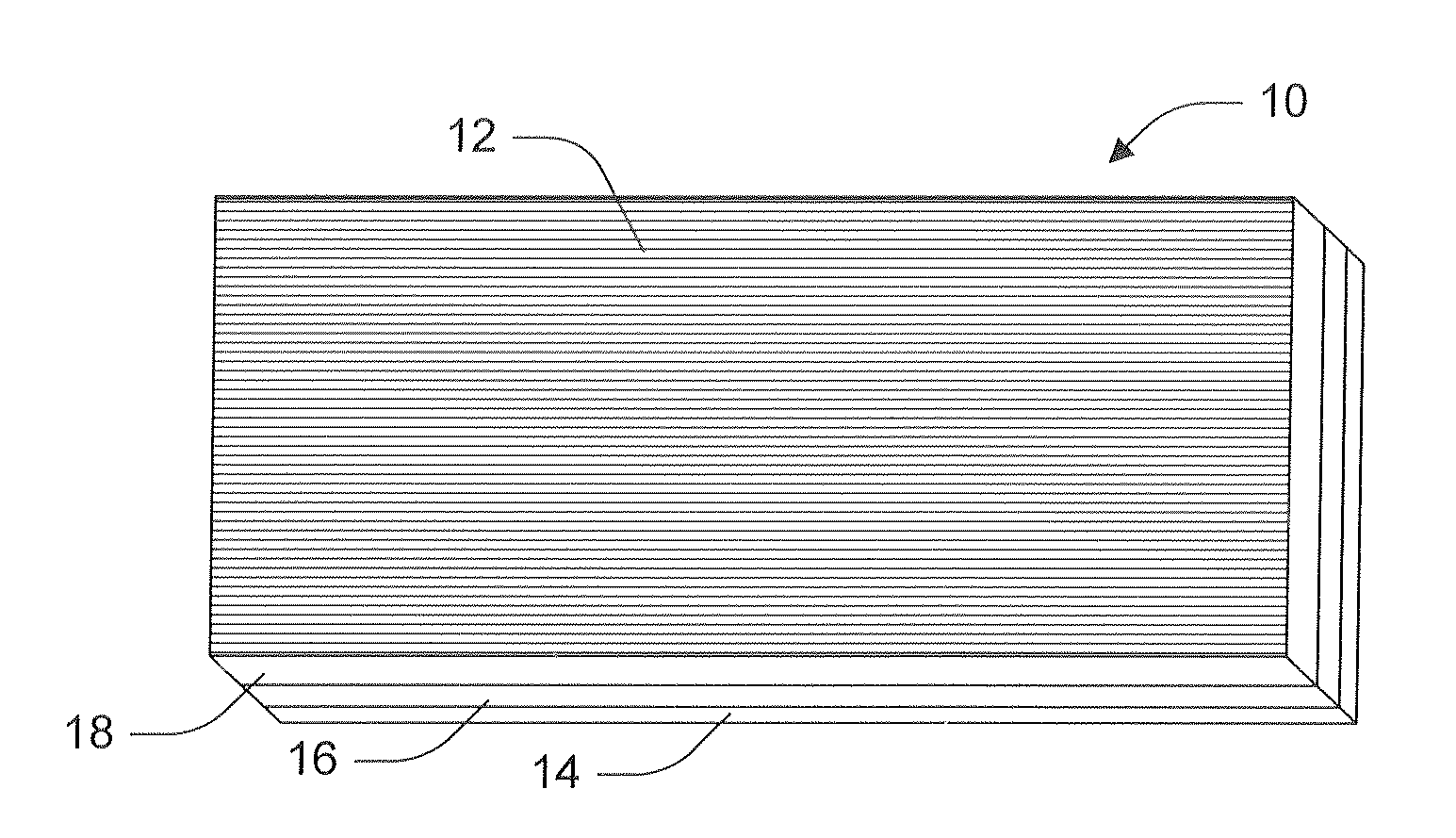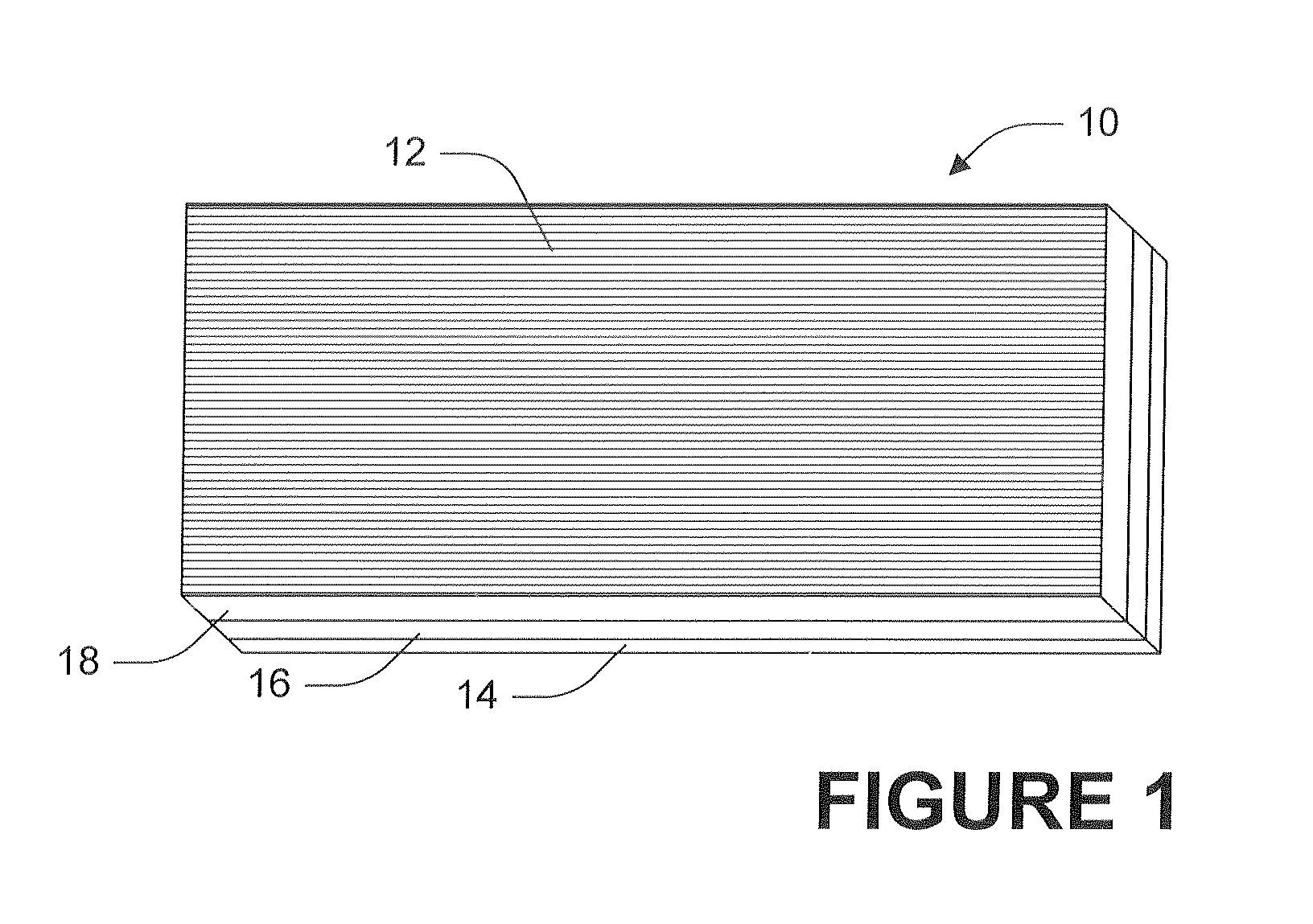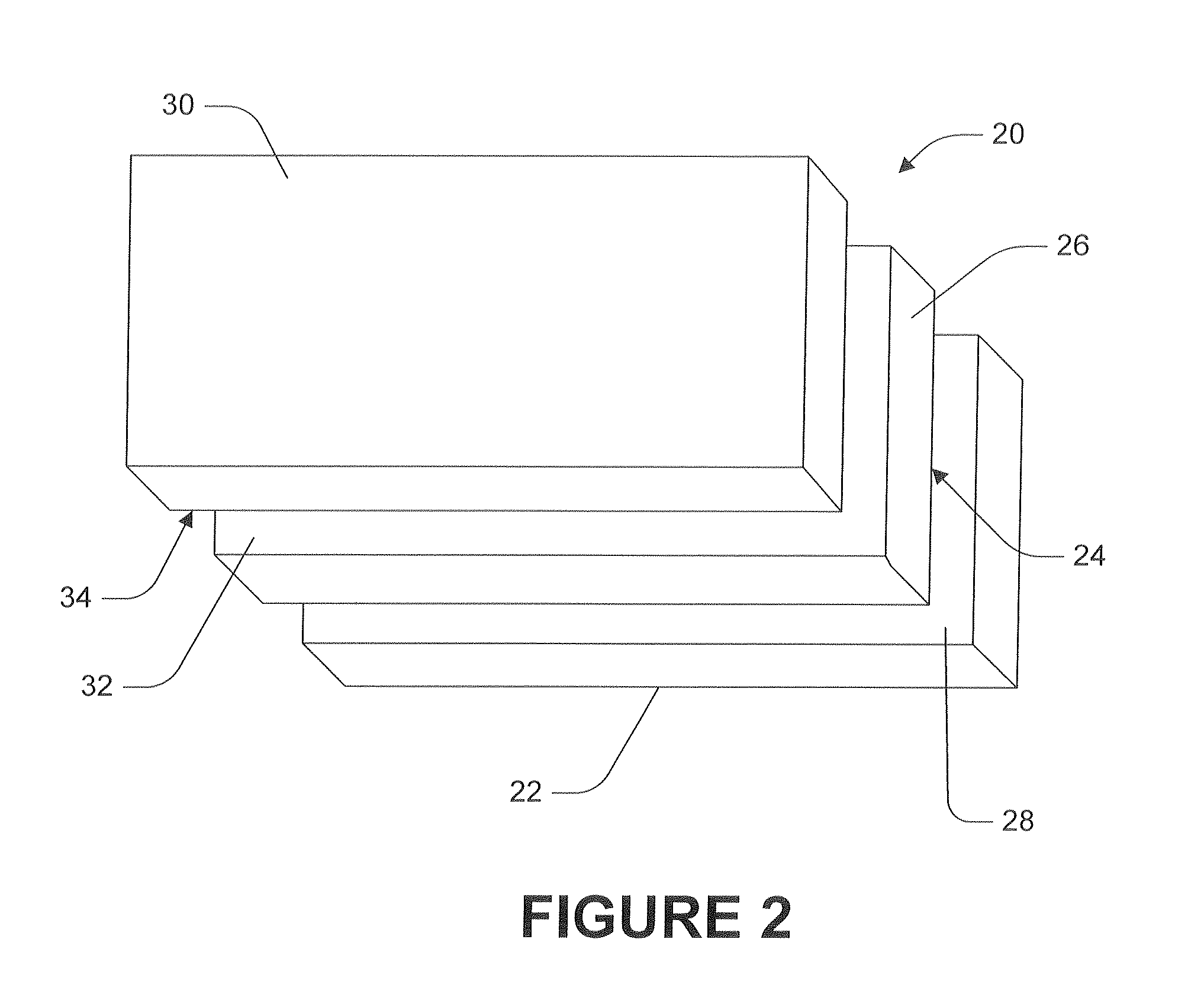Panel containing bamboo
a technology of bamboo and panels, applied in the field of panels containing bamboo, can solve the problems of inability to process into solid lumber boards or planks, and high cost of solid timber wood. , to achieve the effect of improving strength characteristics
- Summary
- Abstract
- Description
- Claims
- Application Information
AI Technical Summary
Problems solved by technology
Method used
Image
Examples
Embodiment Construction
[0020]All parts, percentages, and ratios used herein are expressed by weight unless otherwise specified. All documents cited herein are incorporated by reference.
[0021]As used herein, “lignocellulosic material” is intended to mean a cellular structure, having cell walls composed of cellulose and hemicellulose fibers bonded together by lignin polymer. Wood is a species of lignocellulosic material.
[0022]By “wood composite material” or “wood composite component” it is meant a composite material that comprises lignocellulosic material and one or more other additives, such as adhesives or waxes. Non-limiting examples of wood composite materials include structural composite lumber (“SCL”), waferboard, particle board, chipboard, medium-density fiberboard, plywood, and boards that are a composite of strands and ply veneers. As used herein, “flakes”, “strands”, and “wafers” are considered equivalent to one another and are used interchangeably. A non-exclusive description of wood composite ma...
PUM
| Property | Measurement | Unit |
|---|---|---|
| thickness | aaaaa | aaaaa |
| thickness | aaaaa | aaaaa |
| thickness | aaaaa | aaaaa |
Abstract
Description
Claims
Application Information
 Login to View More
Login to View More - R&D
- Intellectual Property
- Life Sciences
- Materials
- Tech Scout
- Unparalleled Data Quality
- Higher Quality Content
- 60% Fewer Hallucinations
Browse by: Latest US Patents, China's latest patents, Technical Efficacy Thesaurus, Application Domain, Technology Topic, Popular Technical Reports.
© 2025 PatSnap. All rights reserved.Legal|Privacy policy|Modern Slavery Act Transparency Statement|Sitemap|About US| Contact US: help@patsnap.com



